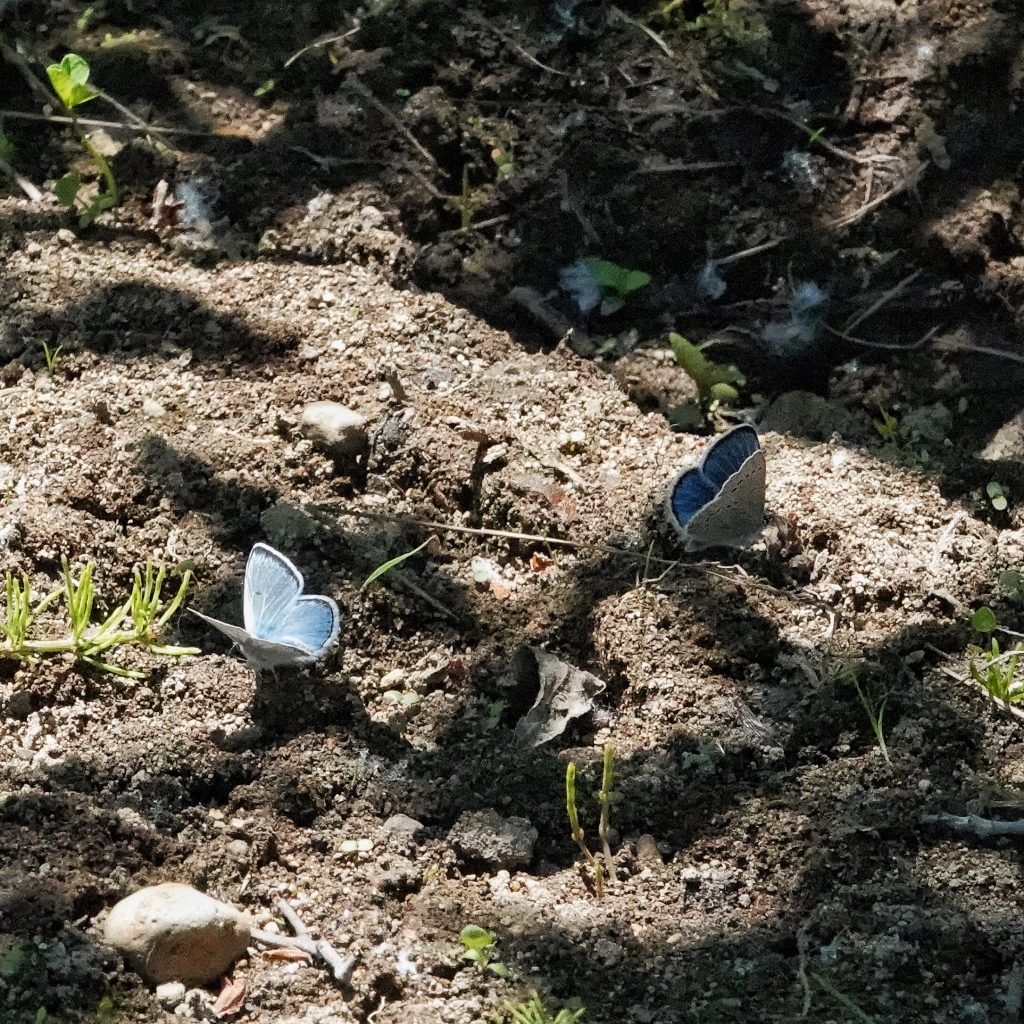
There are only a few blues that I can identify on sight, without having to go through David Droppers’ excellent key to the blues (https://wabutterflyassoc.org/wp-content/uploads/2017/02/Key-to-the-Blues.pdf), but this species is one of them, because nothing else in our region has only a single row of marking on the ventral surface of the wings, as well as lacking any orange markings at the margins. And it’s a good one to be able to quickly identify, or rule out, because these pretty little blues can be found almost everywhere, since their host plants are so widespread and include many of the lupines, vetches, milk vetches, peas, and sweet clovers, as well loco weed, black medic, and alfalfa, and they are frequent attendees of puddle parties (it should be noted that ‘puddling’, which is predominantly a behavior to gain minerals as well as moisture, often happens on ground that is just damp and lacks standing water) with many other species of blues.
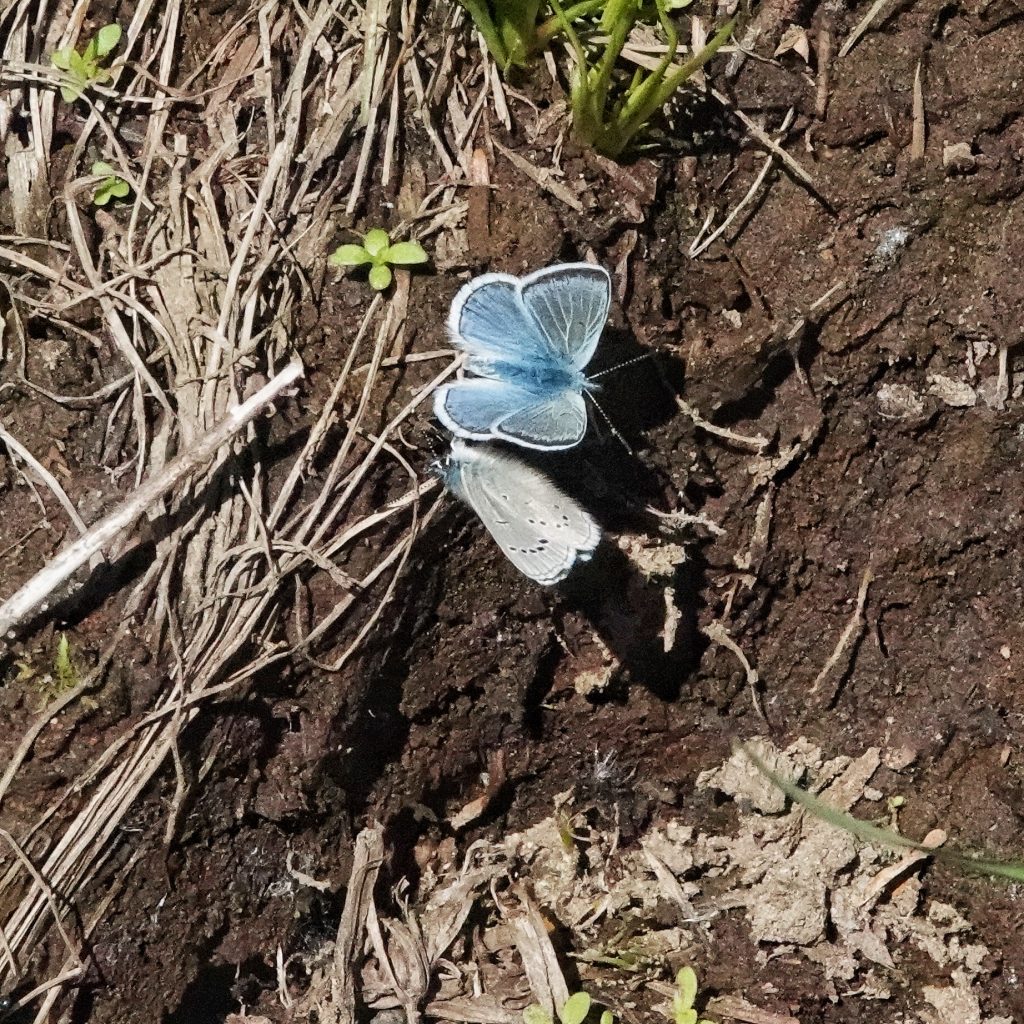
The larvae of silvery blues have a relationship with ants that is particularly fascinating to me; “(1)Larvae of Glaucopsyche lygdamus Doubleday (Lepidoptera: Lycaenidae) secrete substances that attract and appease ants. Workers of the ant Formica altipetens Wheeler harvest these secretions and in return protect the larvae against attacks by small larval parasitoids. We now demonstrate that attendant ants protect larvae of G. lygdamus against different kinds of parasitoids, including those that emerge from the pupae. (2) Larvae whose ants have been experimentally excluded are far more likely to disappear from host plants than larvae with ants, simply because larvae drop off plants without ants. (3)Taking into account parasitism, predation and drop-off, a cohort of ant tended larvae is four to twelve times more likely to survive to pupation than a similar group of untended larvae. Most of this difference in survivorship occurs during the final two larval instars. We argue from these results that attendant ants have had a significant effect on the distribution and structure of populations of G. lygdamus. (4) In contrast with other species of myrmecophilous lycaenids, ants do not play a significant role in the oviposition behaviour of G. lygdamus.” https://piercelab.oeb.harvard.edu/files/pierce/files/1986_pierce_and_easteal.pdf
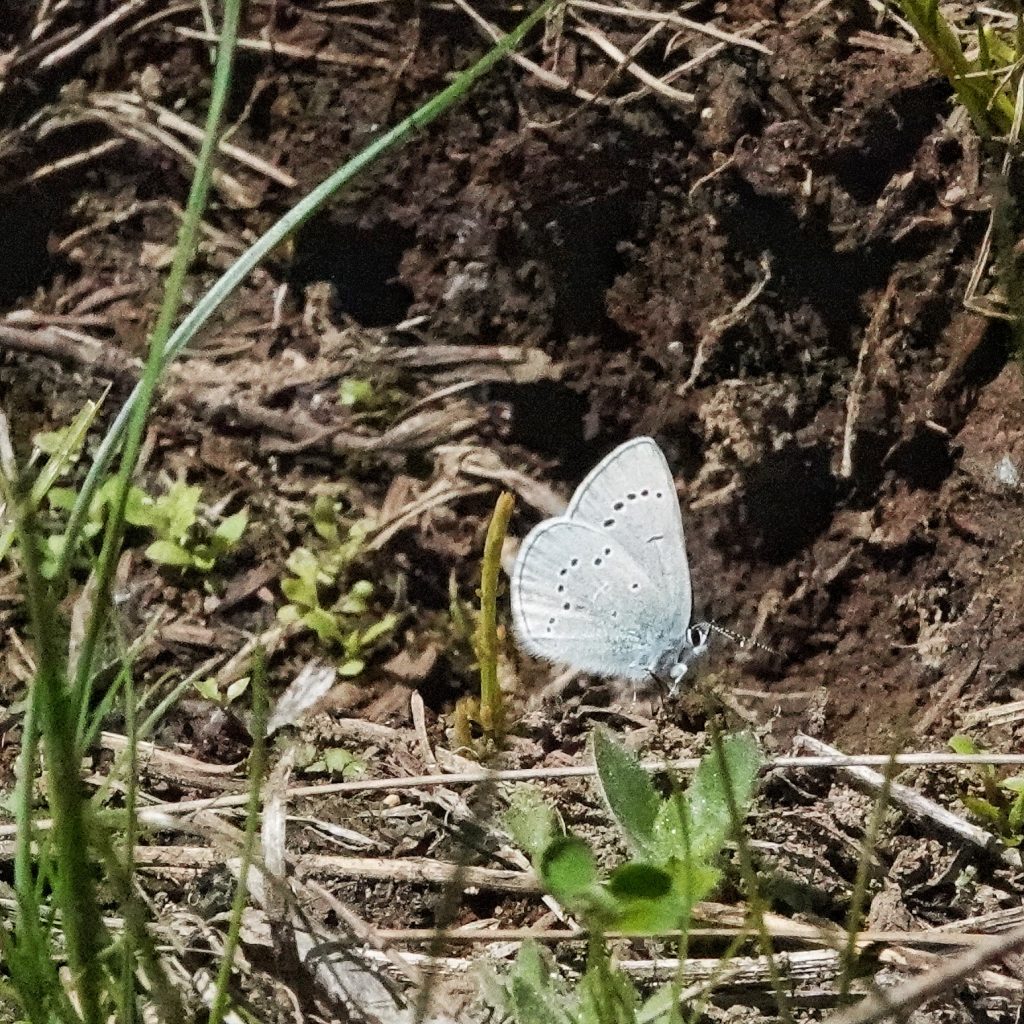
Description– “[From Ferris and Brown 1981; Scott 1986; Opler and Wright 1999; Glassberg 2001; Pyle 2002] Forewing 1.3-1.6 cm. Uppersurface of both wings with black margin and white unchecked fringe; male bright iridescent sliver-blue, female dark brown with or without blue basally. Undersurface off-white to gray-brown, forewing with single postmedian row of round and white-edged black spots, hindwing spots as large as on forewing to nearly absent, no marginal or submarginal spots on either wing.” Silvery Blue – Montana Field Guide
Similar species– Other blues have multiple lines of spots on the ventral side of the wings, and/or orange markings near the margins; male arrowhead blues have a wider black border on the dorsal surface.
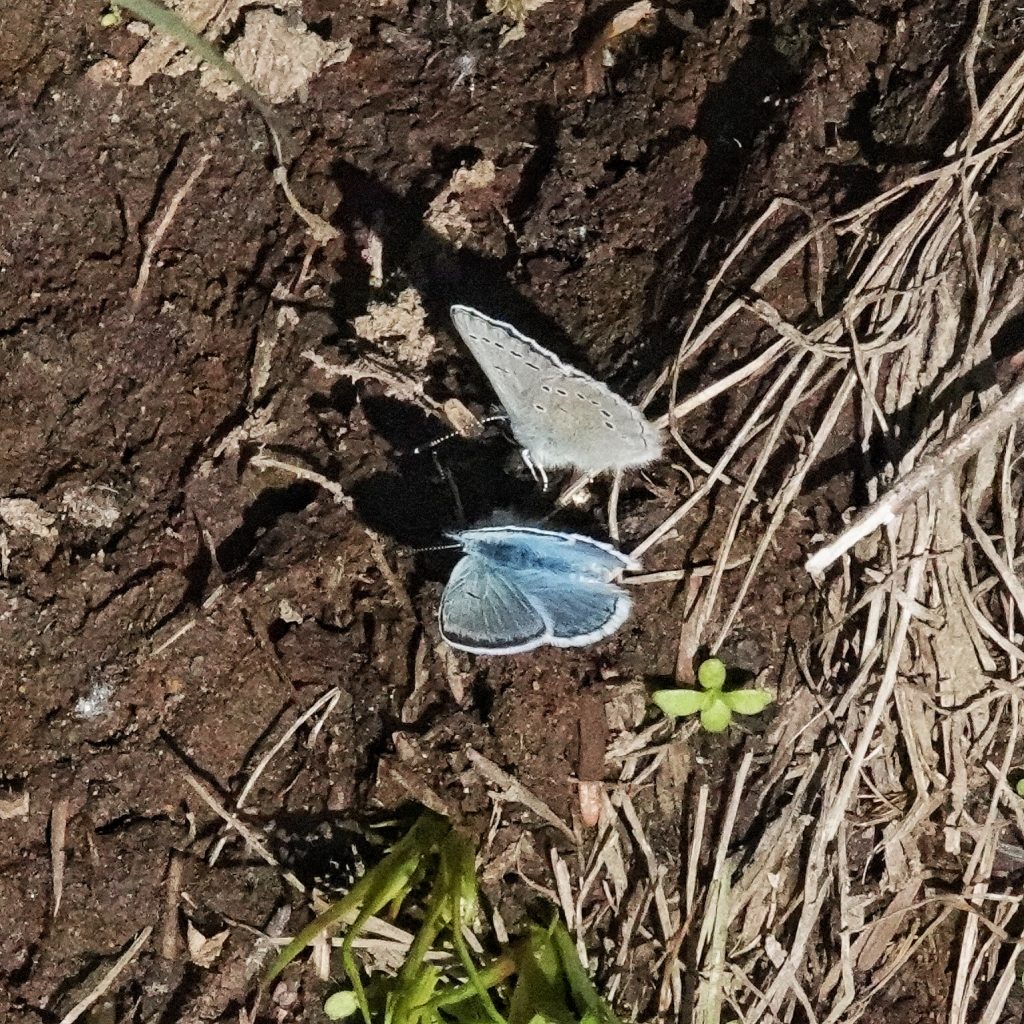
Habitat– Tend to be found most often near moisture, but can be found anywhere its host plants are found.
Range– “Central Alaska south to southern California, Baja California, Arizona, New Mexico, and western Kansas. Along northern United States east to Nova Scotia and south to Georgia.” Silvery Blue Glaucopsyche lygdamus (Doubleday, 1841) | Butterflies and Moths of North America; in the PNW they are found region wide.
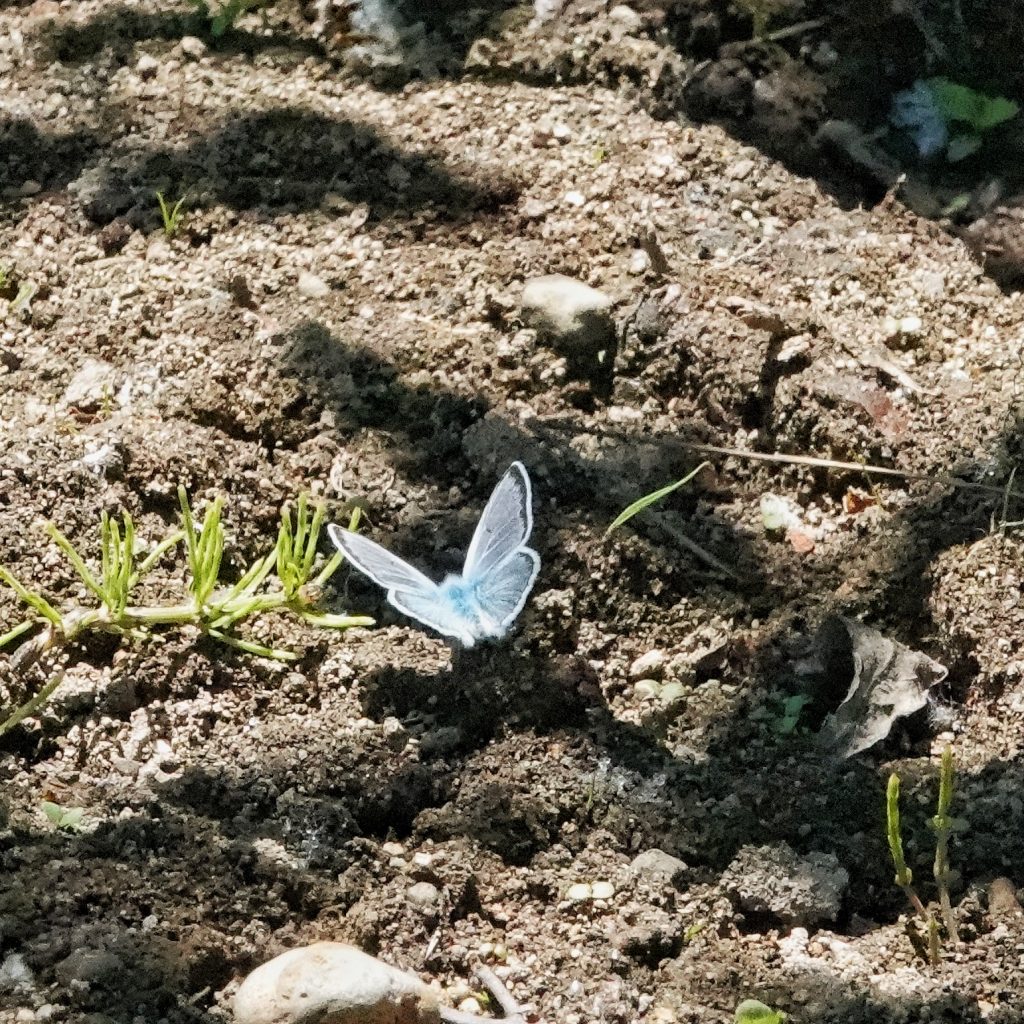
Eats– Larval hosts are a wide variety of members of the pea family (Fabaceae), including plants in the genera Astragalus, Lotus, Lupinus, Melilotus, Oxytropis, Lathyrus, and Vicia; “Adults feed on flower nectar (including Allium, Astragalus, Barbarea, Berberis, Cerastium, Erigeron, Eriogonum, Erysimum, Hymenopappus, Hymenoxys, Harbouria, Iris, Lepidium, Lesquerella, Linum, Lonicera, Medicago, Melilotus, Mertensia, Oxytropis, Phacelia, Physaria, Senecio, Thermopsis, Thlaspi), bird droppings, mammal dung, and mud (Pyle 2002; Warren 2005; Scott 2014).” Silvery Blue – Montana Field Guide
Eaten by– Larvae parasitized by the larvae of the chalcidoid wasp Trichogramma deion, and probably by other wasps and tachinid flies, although their ant tenders apparently protect them from many parasitoids; larvae and adults presumably preyed upon by insectivores of all orders.
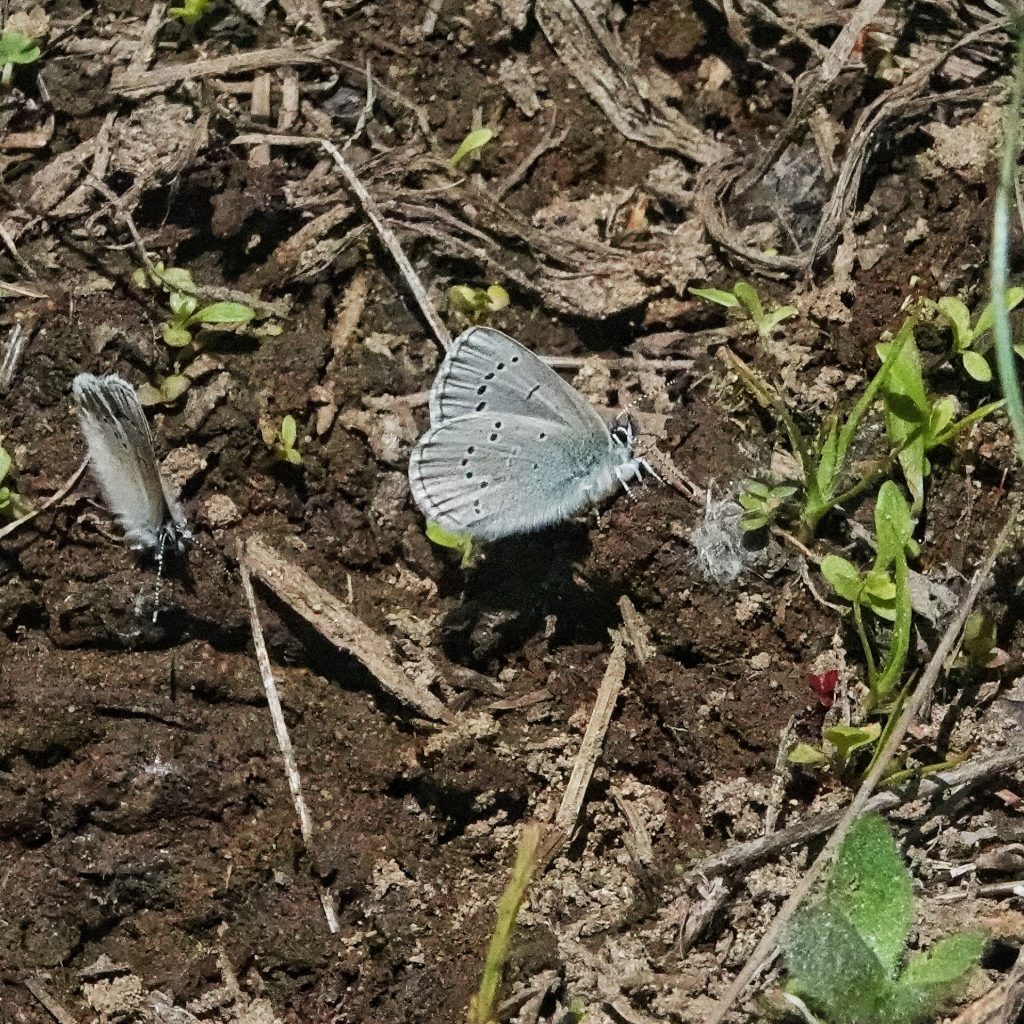
Adults active– “M March to E September, peak in May (the higher the later, with the local spring). A single generation, pupae overwinter, sometimes up to 10 months (James and Nunnallee). “Butterflies of the Pacific Northwest”, Pyle/LaBar; 2018
Life cycle– “Males patrol near the host plants for females. Eggs are laid singly on flower buds and young leaves of the host plants. Caterpillars feed on flowers, seedpods, and young leaves and are tended by ants. Chrysalids hibernate.” Silvery Blue Glaucopsyche lygdamus (Doubleday, 1841) | Butterflies and Moths of North America
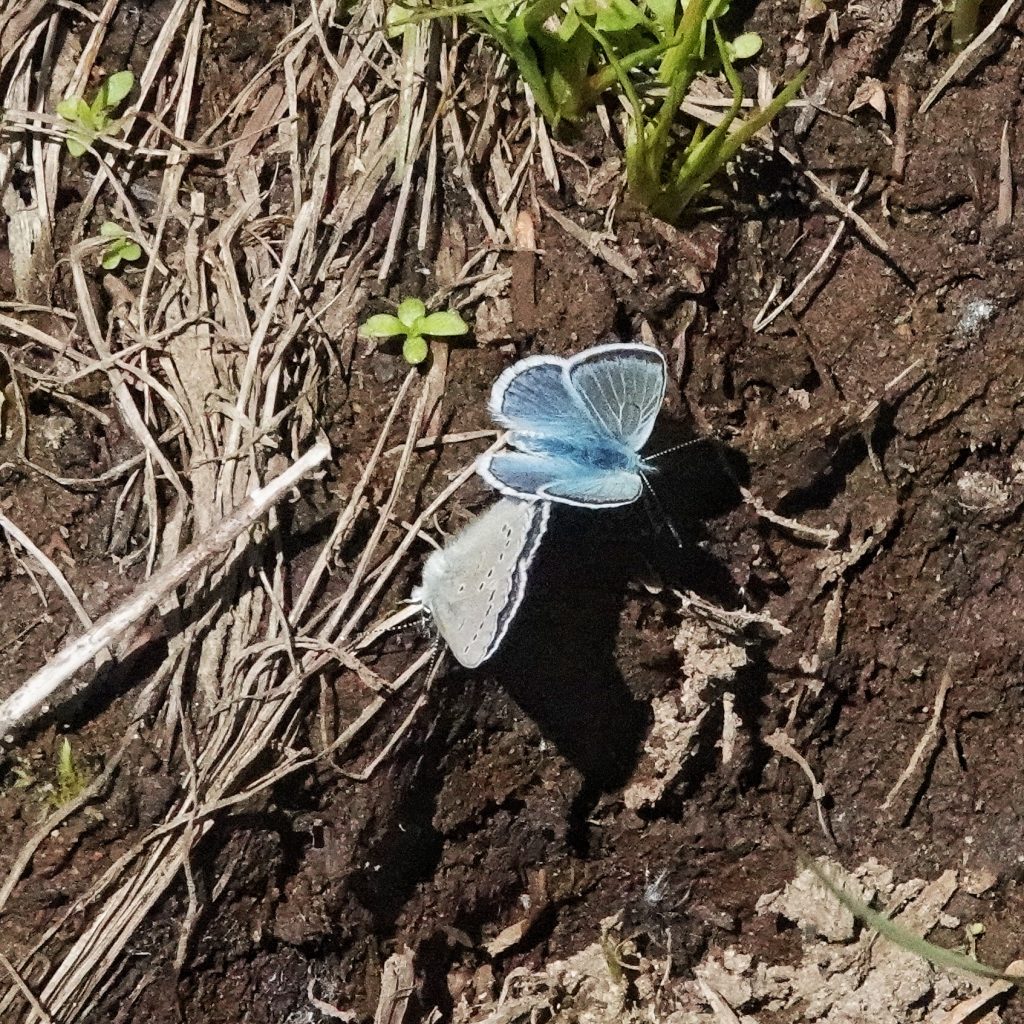
Etymology of names– Glaucopsyche comes from the Greek words for ‘greyish blue’ and ‘the soul personified as a butterfly’, a combination of description and poetry. The specific epithet lygdamus honors the Latin poet Lygdamus
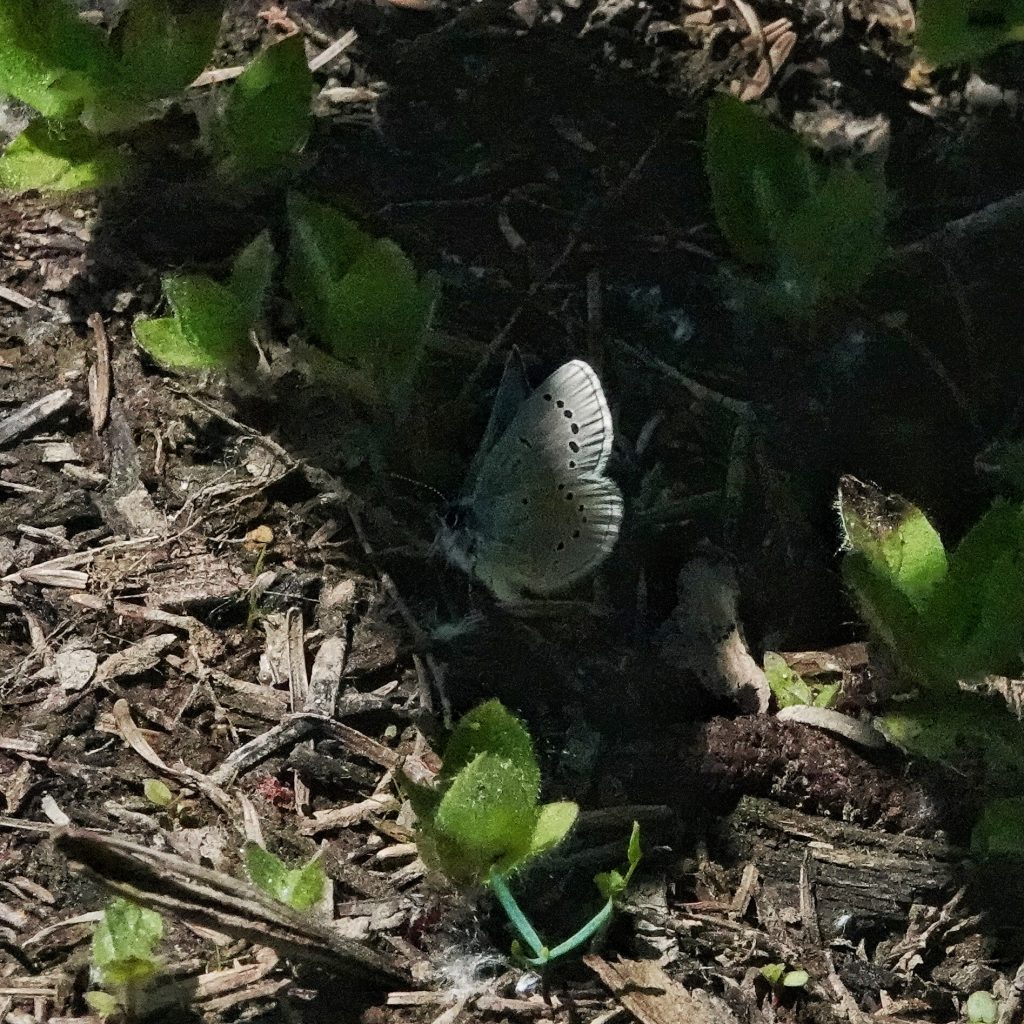
Silvery Blue Glaucopsyche lygdamus (Doubleday, 1841) | Butterflies and Moths of North America
Species Glaucopsyche lygdamus – Silvery Blue – Hodges#4372 – BugGuide.Net
Silvery Blue – Montana Field Guide
Glaucopsyche lygdamus | Art Shapiro’s Butterfly Site
https://wabutterflyassoc.org/wp-content/uploads/2017/02/Key-to-the-Blues.pdf
https://piercelab.oeb.harvard.edu/files/pierce/files/1986_pierce_and_easteal.pdf
Silvery Blue Butterfly: Identification, Facts, & Pictures
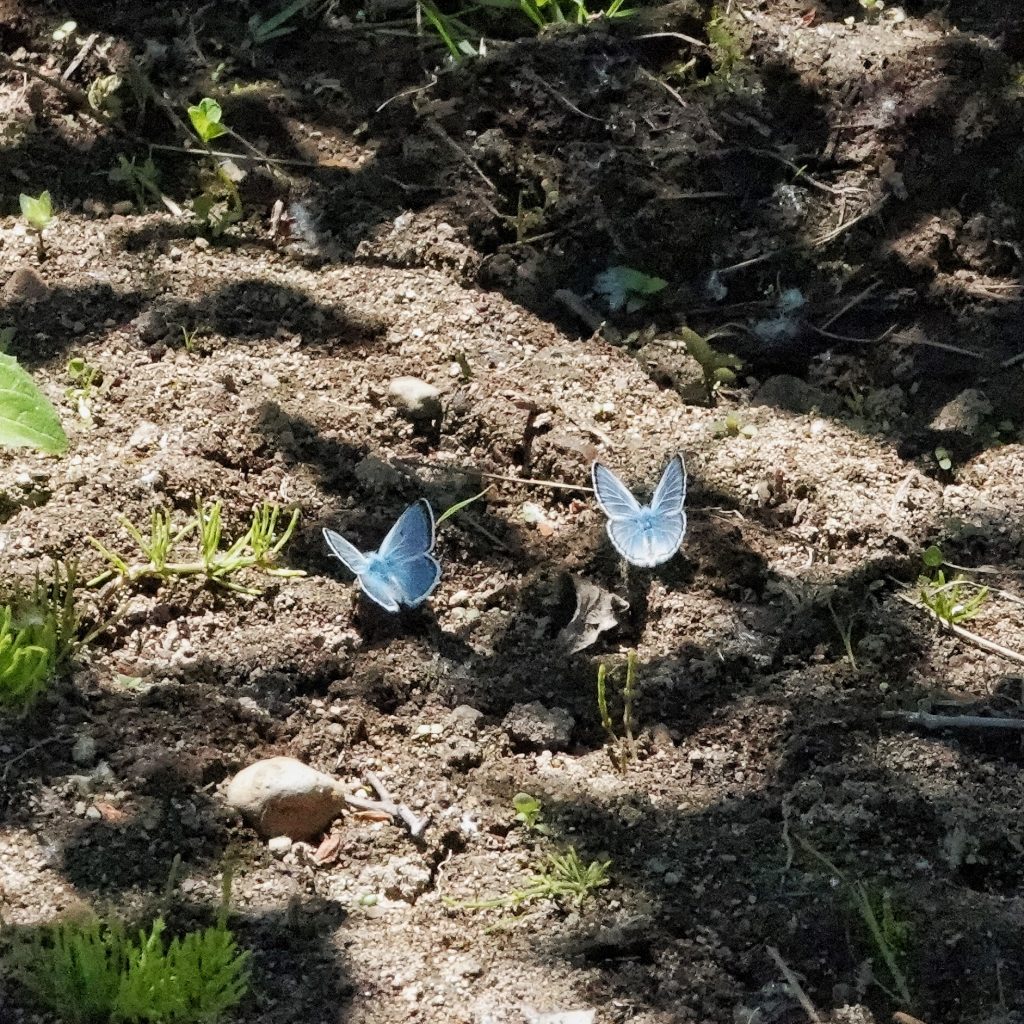
Hi Dan!
Love the site and blog! Always makes for a nice little distraction from work when it hits my email!
Just curious if you think pics 4 and 7 could be something other than a Silvery Blue? Perhaps a Greenish Blue or something else? The subject(s) look to have more than one row of black markings which you mentioned was the key identifier for Silvery Blue. The ventral surface seems to lack whitish arrowhead markings or the white crescent of Arrowhead Blue or Arctic Blue. I’m certainly no expert but just noticed all the black markings which made my curious mind look at the excellent key you linked!
Thanks!
Dang! You’re absolutely right, Jason! I somehow got those greenish blues in with the silvery blues and I totally missed it. Thanks for the heads up. I will fix that posthaste!
And thanks, Jason, for still having kind words for me in the face of an egregious mistake
Oh, no worries and you’re welcome! As far as I’m concerned, we’re all still learning and thus prone to mistakes. I’m sort of excited that I noticed that, though, as I’m totally an amateur in all things lepidoptera-related!
Definitely a good spot!